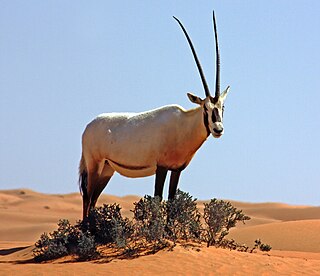
The Reverend Thomas Roscoe Rede Stebbing FRS, FLS was a British zoologist, who described himself as "a serf to natural history, principally employed about Crustacea". Educated in London and Oxford, he only took to natural history in his thirties, having worked as a teacher until then. Although an ordained Anglican priest, Stebbing promoted Darwinism in a number of popular works, and was banned from preaching as a result. His scientific works mostly concerned crustaceans, especially the Amphipoda and Isopoda, the most notable being his work on the amphipods of the Challenger expedition.

Iphinoe is a genus of crustaceans which belong to the family Bodotriidae. It includes the following species:
Hexapus is a genus of crabs in the family Hexapodidae. It contains only three extant species found in the Indo-West Pacific. They inhabit the intertidal and subtidal areas of shorelines.

Xyletobius is a genus of beetles in the family Ptinidae.
Xyletobius stebbingi is a species of beetle in the family Ptinidae.
The Podasconidae are a family of marine isopod crustaceans in the suborder Cymothoida. The original description was made by Giard and Bonnier in 1895. Members of this family are parasitic on amphipods.

The wildlife of Qatar includes the peninsula's flora and fauna and their natural habitats. The country's terrestrial wildlife includes numerous small nocturnal mammals, a number of reptiles which mainly consist of lizard species, and arthropods. Aquatic animals primarily include fish, shrimp and pearl oysters. The desert and the shoreline form an important resting site for a number of migratory bird species during autumn and spring. Urban and agricultural developments have led to an increase in bird species.
Metapenaeus stebbingi, the peregrine shrimp is a species of marine crustacean from the family Penaeidae. It is native to the Indian Ocean but in the second half of the 20th Century it was found to have invaded the Mediterranean Sea.
Mallota bequaerti is a species of syrphid fly in the family Syrphidae.
Aradus acutus is a species of flat bug in the family Aradidae. It is found in North America.
Aradus borealis is a species of flat bug in the family Aradidae. It is found in North America.
Gozmanyina majestus is a species of cosmochthoniid in the family Cosmochthoniidae.
Phloeosinus pini is a species of crenulate bark beetle in the family Curculionidae. It is found in North America.
Aradus intectus is a species of flat bug in the family Aradidae. It is found in North America.
Scelolyperus lecontii is a species of skeletonizing leaf beetle in the family Chrysomelidae.
Mezira pacifica is a species of flat bug in the family Aradidae. It is found in North America.

Scelolyperus torquatus is a species of skeletonizing leaf beetle in the family Chrysomelidae.
Exochocepheus eremitus is a species of mite in the family Scutoverticidae.
Cordioniscus is a genus of woodlice in the family Trichoniscidae. There are about 18 described species in Cordioniscus.
Phloeosinus sequoiae is a species of crenulate bark beetle in the family Curculionidae. It is found in North America.




